Searching for That Ferocious “Ferrari” Sound With Supervising Sound Editor Tony Lamberti
How eager was Tony Lamberti to work on Michael Mann’s latest feature? Let’s just say the director had Lamberti, a Formula 1 enthusiast, at Ferrari.
The Oscar-nominated (Inglourious Basterds), Emmy-winning (John Adams) audio engineer got his first peek at the feature about Enzo Ferrari and his iconic racing legacy back in 2015. Overseeing a mix update on Mann’s crime thriller Blackhat, Lamberti encountered Mann’s dream project during a visit to the director’s office.
“He had all the materials out for Ferrari,” remembers Lamberti during a recent Zoom conversation. “He had tons of research. He showed me some of the build sheets and said, ‘I’m going to have to build these cars from scratch because I need them for the rigors of production. I need to put cameras on them and drive them hard.’”
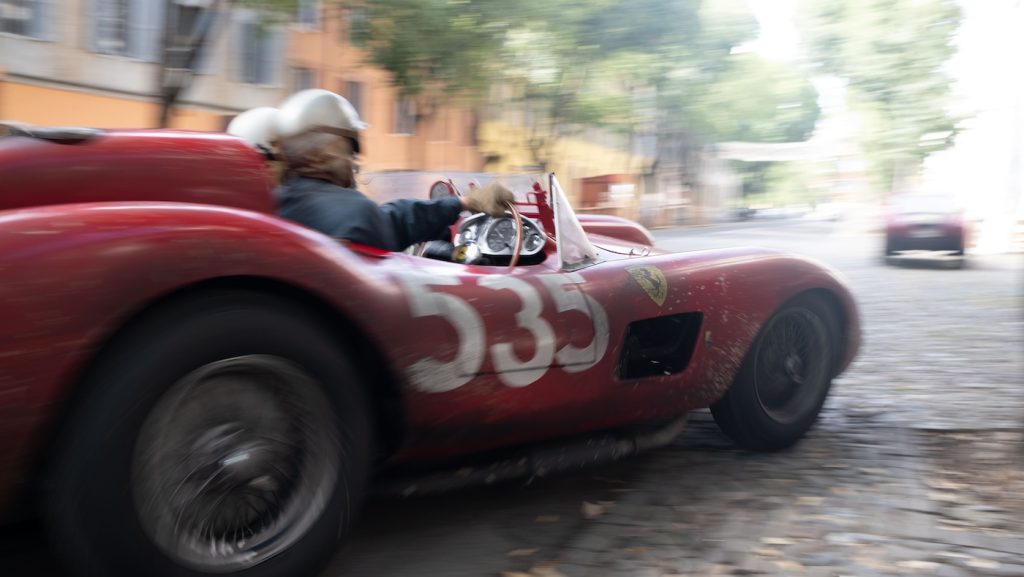
Lamberti knew a key element of Mann’s vision would be the roar of the engines during the racing sequences. And to the expert ear, that meant recreating sounds from over 60 years ago.
Set during the summer of 1957, Ferrari sees the renowned carmaker, played by Adam Driver, at a tumultuous moment in his life. His company is on a crash course with bankruptcy. The death of his son Dino has driven a wedge between Ferrari and his wife Laura (Penélope Cruz), who is also his business partner. Adding to their tension is Enzo’s wartime romance with Lina (Shailene Woodley). They had a son, and Ferrari now divides his time between his two families.
Working with Lamberti were some of the best audio experts in the business. Bernard Weiser (Ted Lasso, True Detective) shared sound editorial duties with Lamberti. Oscar-winner Lee Orloff (Terminator 2: Judgment Day) served as sound mixer. Lamberti and Andy Nelson, whose 24 Academy Award nominations include wins for Les Misérables and Saving Private Ryan, handled the re-recording mixes.
“These are all longtime Michael collaborators,” continues Lamberti. “Once he finds people that get his methodology and aesthetics, he likes to stick with them. Andy gave me some great advice leading up to Blackhat , and I’ve carried that through all my work with Michael. Lee has frequently collaborated with Mann. Bernard was also on Blackhat. It just made sense to put this team together, and it worked out fantastic.”
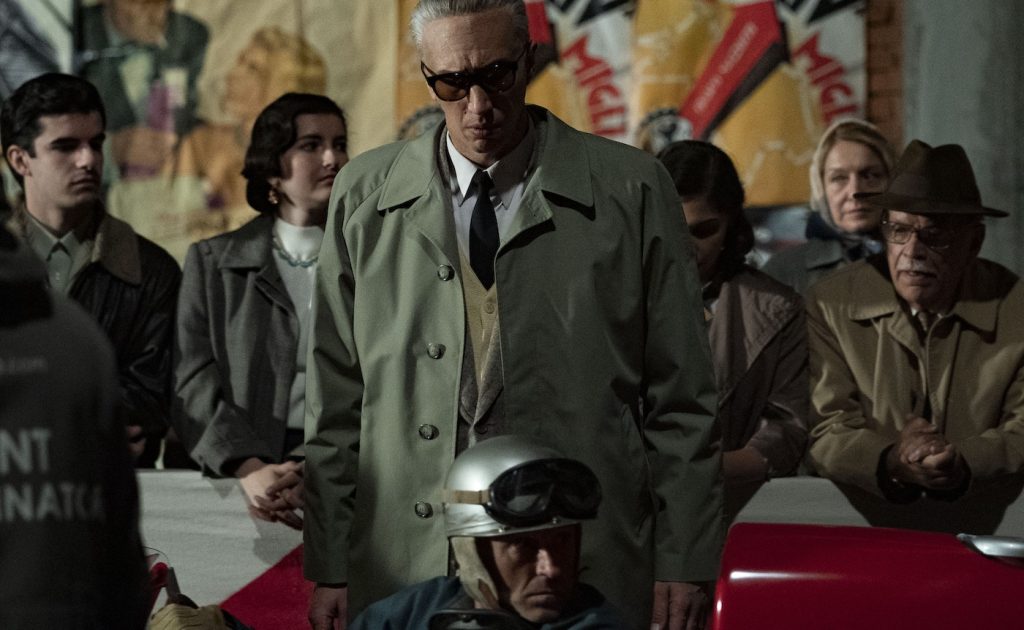
Previous productions had taught Lamberti that Mann would want a rudimentary sound mix as the film was being cut. Weiser and Orloff concentrated on dialogue recording. Lamberti and Nelson assembled the temp dubs. Lamberti estimates four of these mixes were generated during the process.
As valuable as these initial mixes were, they were missing one crucial sound — the actual cars. The Ferraris and Maseratis (Ferrari’s chief competitor) replicated for filming were fitted with 4-cylinder turbo motors. These compact engines were great for withstanding multiple takes and long shoot days but lacked the iconic tones of the originals.
“It was a rude and crude sound edit,” continues Lamberti. “We made the most of the production sound for screening purposes, knowing that we’d be doing recording sessions with the real cars later.”
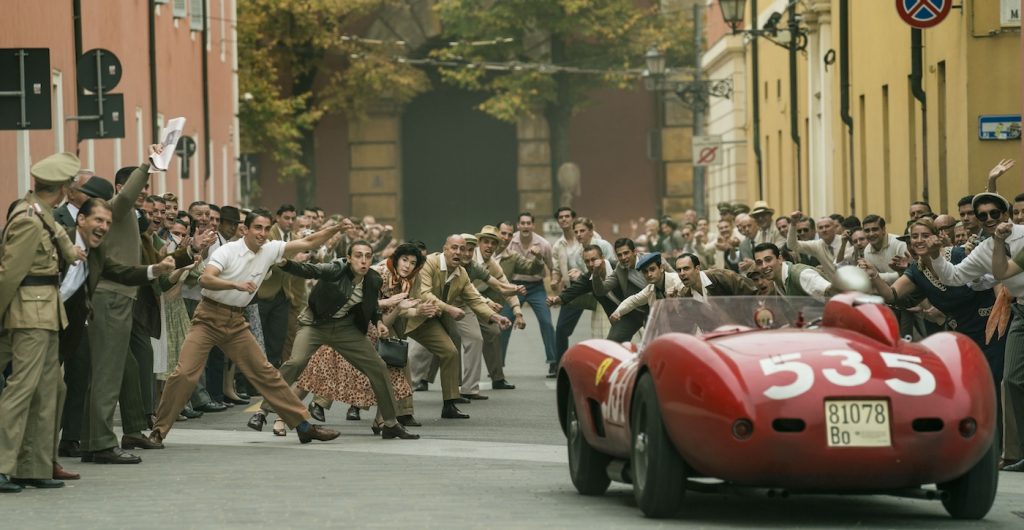
Lamberti, together with Mann and stunt coordinator Robert Nagle, mapped out a frame-by-frame strategy for the cars. Every upshift and downshift was noted. No corner acceleration or deceleration was overlooked. With cues in hand, Lamberti set about creating a sound that would not only awe audiences but also wow racing aficionados. Topping the latter was Mann, an experienced racer himself.
“Michael is dedicated to authenticity,” says Lamberti. “That was the edict from a sound perspective. We wanted racing drivers watching these scenes to believe that this actually happened in 1957.”
To do so, Lamberti had to hunt down two classic Ferraris and a Maserati that could be raced and recorded. Little did he realize the search would take him around the world and ultimately lead to a member of one of rock’s most famous bands.
Lamberti and Ferrari co-producer Maggie Chieffo started putting out feelers. Locating the cars turned out to be the easy part. Persuading the owners to allow them to be mic’d up and run at high speeds was another matter entirely.
“American collectors and museums were helpful, but these cars can be worth tens of millions of dollars,” explains Lamberti. “There are a lot of considerations. The insurance people get concerned. Nobody wants these pieces of art damaged.”
A period correct, 1957 two-seater V12 Ferrari was located in Los Angeles. Its owner, a successful real estate investor, showed interest, so Mann screened the rough cut for him to seal the deal. It did just the opposite. The investor thought the 4-cylinder engines sounded great and couldn’t understand the need to put his car — worth an estimated $20 million — at risk.
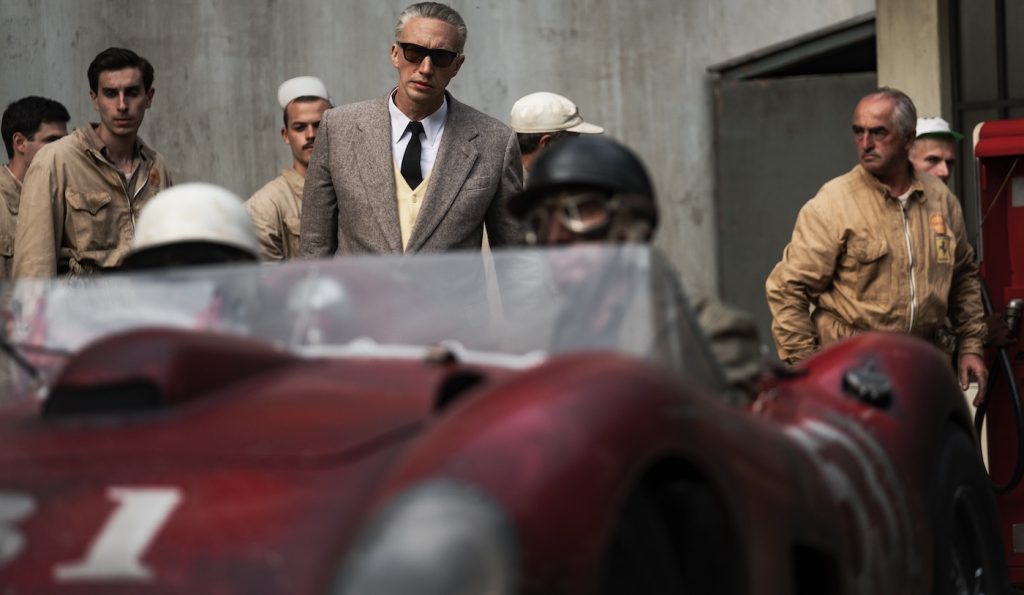
The quest for a Ferrari 801 also hit a dead end. Rarer than a unicorn, the only one known to be in existence is in the Ferrari Museum in Maranello, Italy. Having just finished a costly renovation on it, the museum wanted it to stay put.
The Revs Institute in Naples, Florida, had a 1955 Ferrari-Lancia D50 in its collection. The predecessor to the Ferrari 801, it plays a feature role in the French Grand Prix scene depicted in the movie. Revs agreed to Lamberti’s recording request but then came the snag. When the museum curator asked more about the car in the film, he realized the car in its collection was two years older. The engine would sound noticeably different.
Ferrari’s savior turned out to be musician Nick Mason. A founding member of Pink Floyd, Mason had used his success as its drummer to finance his true passion — motor racing. In addition to competing in such races as Le Mans, Mason owns some of the world’s most classic autos. “The guy is legendary in the car collecting world. He has like a stable of 50 cars,” says Lamberti. “Holly Mason, his daughter, runs the collection for him.”
The Masons had actually been one of Lamberti’s first calls. “We knew we had to record the Maserati 250 F1 from Nick Mason’s collection because it’s the actual car in the movie,” says the sound designer.
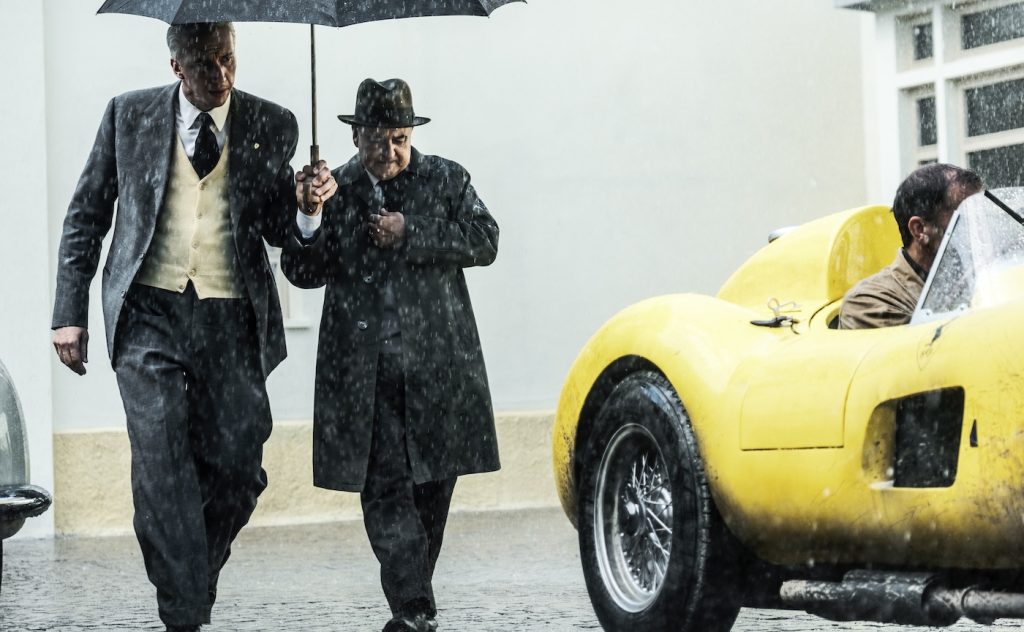
The Masons agreed, and it turned out to be the start of a beautiful relationship. After the Revs Institute lead didn’t pan out, its curator suggested Lamberti reach out to prominent English businessman Anthony Bamford. Another classic car collector, he had a D50A in his collection. As luck would have it, Holly was a friend and was able to arrange with Bamford to have it available for a recording session.
Holly then got Lamberti over the finish line when the search for a V12 Ferrari kept hitting speed bumps. A deeper dive into the Mason collection uncovered a 1953 Ferrari 250 Mille Miglia PF V12 Coupe. Turns out, it had raced in the 1953 Mille Miglia, Ferrari’s climatic race. How could Lamberti resist? “Holly Mason was really fantastic. She ended up being Ferrari’s hero,” he says.
The field recordings were done by sound engineer Chris Jojo at a private track in the UK. “We had a couple of mics in the engine bay, one near the intakes, one near the headers,” explains Lamberti. “We had mics in the cockpit. We had two sets of mics on the tailpipes to record in stereo. That’s where the magic happens.”
And happen it did.
“We’d been listening to these little 4-cylinders for months and months,” remembers Lamberti. “The first time Michael started hearing the real engines in the mix, he was like, ‘Oh my God, it sounds so glorious, it completely changes my perspective.’”
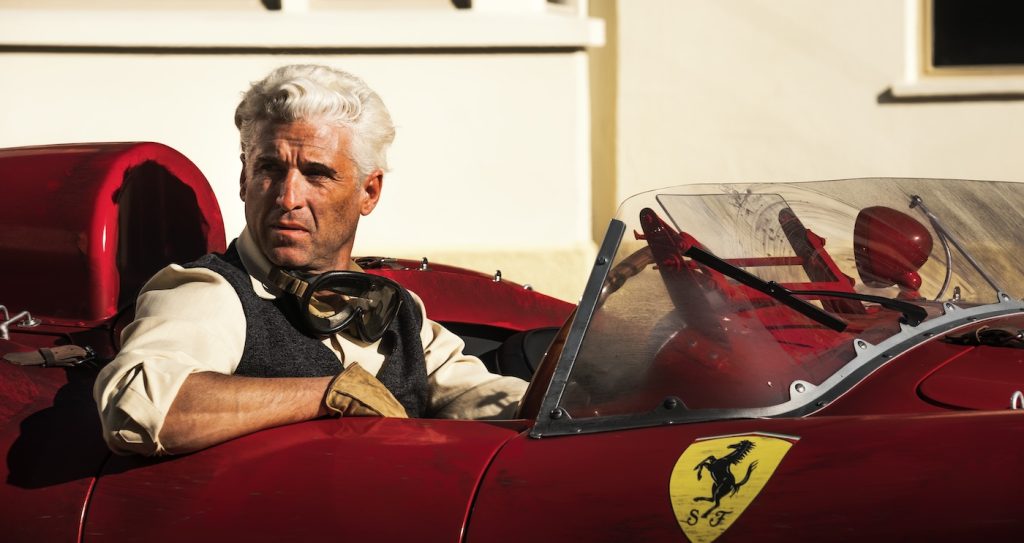
Ferrari is in theaters on December 25.
Featured image: Adam Driver as Enzo Ferrari. Photo Credit Lorenzo Sisti



